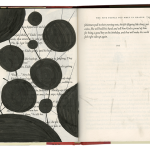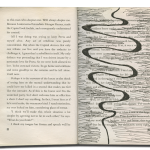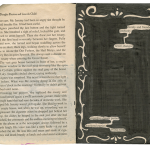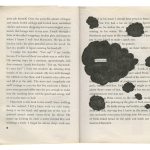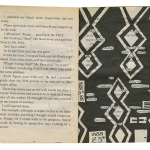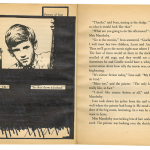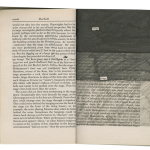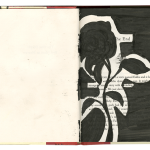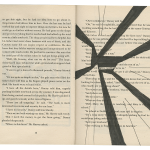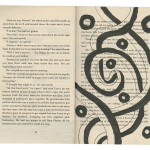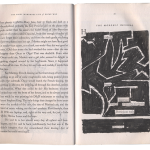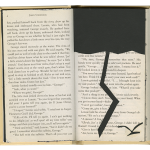Course / Level: Graphic Design Principles 1 (First Year Learning Community) / Freshman Foundation
Overview: As part of Prof. Jody Rosen’s and my 2015 First Year Learning Community (COMD1100 & ENG1101) we introduced a semester-long, cross-disciplinary student project called “A Humument.” The project was based on artist, Tom Phillips’s altered text of the same name, and culminated in an exhibition at the Ursula C. Schwerin Library and also a student research poster at the City Tech Student Research Poster Presentation. Both were well received and gave first semester students the unique opportunity to showcase their writing and visual design to the college community.
Problem: Using painting, collage, drawing, and cut-up techniques create an entirely new written and visual document that encompasses the tenents of design and explores the variety of ways we see, hear, speak, touch, and understand the world.
Learning Outcomes: Your Humument will be a record of the conceptual and formal design and writing principles that you have explored in this Learning Community.
Materials/Techniques: a found book (used or purchased for $1 or less), variety of materials (paint, pencil, collage papers, knife, scissors, glue, tape, etc.)
References: In 1966 artist Tom Phillips set himself a task: to find a second-hand book for threepence and alter every page by painting, collage and cut-up techniques to create an entirely new version. He found his threepenny novel in a junkshop on Peckham Rye, South London. This was an 1892 Victorian obscurity titled A Human Document by W.H Mallock and he titled his altered book A Humument. The first version of all 367 treated pages was published in 1973 since then there have been four revised editions. A Humument is now one of the best known and loved of all 20th Century artist’s books and is regarded as a seminal classic of postmodern art.
Student Work:
- Student Work: Romie
- Student Work: Brian
- Student Work: Brandy
- Student Work: Brian
- Student Work: Ayano
- Student Work: Jay
- Student Work: Jing Yi
- Student Work: Romie
- Student Work: Ruky
- Student Work: Ruky
- Student Work: Shadin
- Student Work: Ying Yang
Student Exhibition:
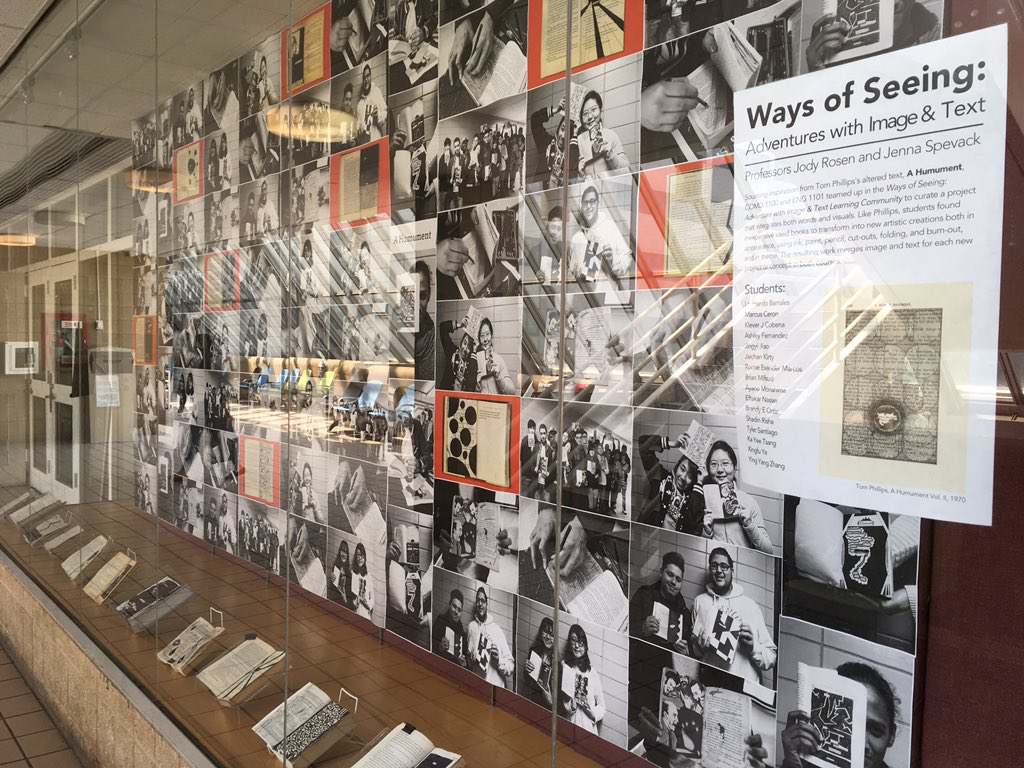
Student Poster:
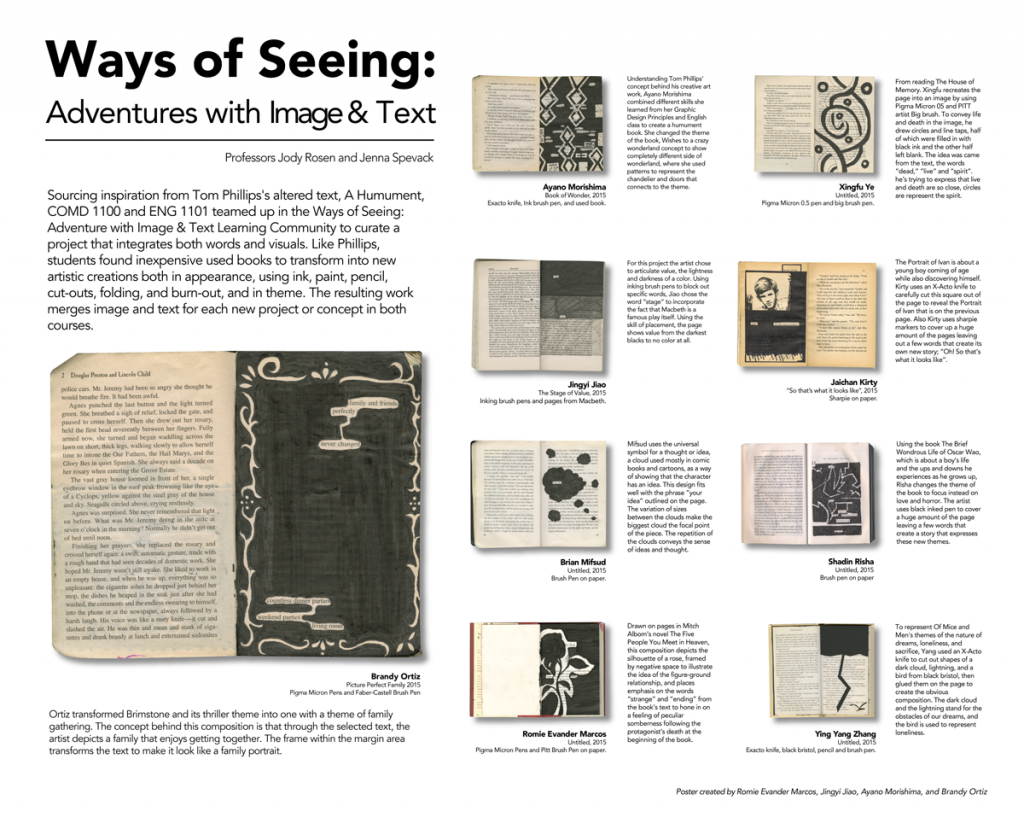
Student Poster
Process:
- Find/buy a book for no more than $1.
- At the end of each ENG and COMD project*, alter at least one page in your book using the principles, vocabulary or elements covered in the project.
- Post your work to the class blog:
- Post title: Humument #1, Humument #2, Humument #3, etc…
- Category: Humument
- Tags: (vocabulary terms used to describe the concepts covered in the project.)
- Comment on at least 1 other student’s Humument post.
- View Humument-related posts and work-in-progress on the Class Blog: here.
- Present your book at the end of course as part of our class research poster.
*Project #1 Example:
Using Tom Phillips’ original Humument project as a guide, create 5 pages in your book that demonstrate the concepts we’ve covered in this project.
Concepts: Each page should clearly visually communicate these concepts to your reader/viewer:
- Shape (Organic, Geometric)
- Frame
- Figure-Ground (Obvious, Ambiguous, positive space, negative space)
- Unity
- Economy
Process:
- Experiment with blocking out and/or revealing certain areas of text or individual words to communicate your concepts.
- Use pencils, inking pens and black paper (collage) to create your pages.
- These should be beautiful objects when complete.
